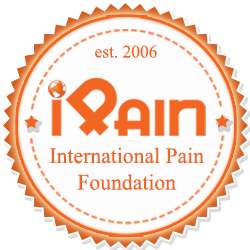Virtual reality (VR) is a cutting-edge technology that has been rapidly evolving over the past few decades. It allows users to experience a fully immersive, computer-generated environment that can be interacted with in a seemingly real or physical way. This technology has found applications in various industries, including gaming, entertainment, education, and healthcare.
Understanding the Concept of Pain Management
Pain management is a critical aspect of healthcare, as it involves the treatment and alleviation of various types of pain, from acute to chronic. Traditional methods of pain management have included a range of pharmacological and non-pharmacological approaches, such as medication, physical therapy, and psychological interventions.
Traditional Methods of Pain Management
Traditionally, pain management has relied heavily on the use of medications, including over-the-counter and prescription painkillers. While these medications can be effective in providing relief, they often come with a range of side effects and risks, such as addiction, dependence, and gastrointestinal issues. Non-pharmacological approaches, such as physical therapy, cognitive-behavioral therapy, and complementary therapies, have also been used to manage pain, but their effectiveness can be limited.
The Emergence of Virtual Reality in Pain Management
In recent years, the healthcare industry has witnessed a remarkable development in the use of virtual reality (VR) technology for pain management. VR has emerged as a promising alternative or complementary approach to traditional pain management methods, offering unique benefits and advantages, and even playing a role in supporting body transformation journeys by alleviating discomfort during physical rehabilitation and exercise routines.
How Virtual Reality Works in Pain Management
Virtual reality works in pain management by providing a highly immersive and engaging experience that can effectively distract the patient from the perception of pain. By immersing the patient in a virtual environment, VR can redirect their attention away from the painful stimuli, triggering a neurological response that can reduce the perception of pain.
Benefits of Using Virtual Reality for Pain Management
The use of virtual reality in pain management has several benefits, including:
- Reduced Perception of Pain: VR has been shown to effectively reduce the perception of pain, both in acute and chronic pain conditions, by distracting the patient and altering their pain experience.
- Non-Pharmacological Approach: VR offers a non-pharmacological alternative to traditional pain management methods, reducing the need for potentially addictive or side-effect-prone medications and complementing approaches like fatty liver treatment by addressing associated discomfort or stress.
- Improved Patient Engagement: VR experiences can be highly engaging and interactive, which can enhance patient motivation and adherence to pain management programs.
- Versatility and Customization: VR applications can be tailored to the specific needs and preferences of individual patients, allowing for a more personalized pain management approach.
- Cost-Effectiveness: While the initial investment in VR technology may be high, the long-term benefits and potential for reduced medication and healthcare costs can make it a cost-effective solution for pain management.
Case studies: Success Stories of Virtual Reality in Pain Management
Several case studies have documented the successful use of virtual reality in pain management. For example, a study published in the Journal of the American Academy of Orthopedic Surgeons found that patients who used VR during burn wound care reported significantly less pain and anxiety compared to those who received standard care. Another study published in the Journal of Medical Internet Research demonstrated the effectiveness of VR in reducing chronic low back pain, with participants reporting improved functional outcomes and reduced reliance on pain medication.
Challenges and Limitations of Virtual Reality in Pain Management
While the use of virtual reality in pain management has shown promising results, there are also some challenges and limitations to consider:
- Cost and Accessibility: The initial investment in VR technology can be high, which may limit its accessibility, especially in resource-constrained healthcare settings.
- Technical Limitations: Some patients may experience motion sickness or other discomfort while using VR, and the technology may not be suitable for all individuals, such as those with certain physical or cognitive impairments.
- Integration with Healthcare Systems: Integrating VR technology into existing healthcare systems and workflows can be a complex and time-consuming process, requiring careful planning and coordination.
- Ongoing Research and Evidence: While the available research on the use of VR in pain management is promising, more long-term studies and real-world evidence are needed to fully understand its efficacy and long-term benefits.
Future Prospects of Virtual Reality in Pain Management
As virtual reality technology continues to evolve and become more accessible, the potential for its use in pain management is expected to grow. Researchers and healthcare professionals are exploring ways to further enhance the capabilities of VR, such as incorporating biofeedback, personalized content, and advanced tracking technologies to provide even more effective and tailored pain management solutions.
Conclusion: The Impact of Virtual Reality on Pain Management
In conclusion, the emergence of virtual reality in pain management has the potential to revolutionize the way we approach and manage various types of pain. By providing a non-pharmacological, engaging, and customizable approach to pain relief, VR offers a promising alternative to traditional methods, with the ability to reduce the perception of pain, improve patient outcomes, and potentially reduce healthcare costs. As the technology continues to advance and become more widely adopted, the impact of virtual reality on pain management is likely to grow, offering new hope and possibilities for those suffering from acute and chronic pain.
Authored by Laura Watson
Published by International pain Foundation, iPain Blog, Team iPain

